
Extra! Extra!
Read recent SGCI Newsletters Below!
July 20, 2024 Summer 2024 Newsletter
July 2, 2024 Opportunities Galore!
May 15, 2024 2025 Awards Nominations Are Open.
March 3, 2024. Verified By Proof Conference Schedule!
February 15, 204 Avoid the lines…Register now for Verified By Proof : SGCI Providence!
January 1, 2024 Announcing the 2024 Award Recipients!
December 5, 2023. Verified By Proof Conference Registration is open. See the schedule and check out Opportunities
November 22, 2023 Conference Registration & Opportunities, Vote for Awards Finalists, and More!
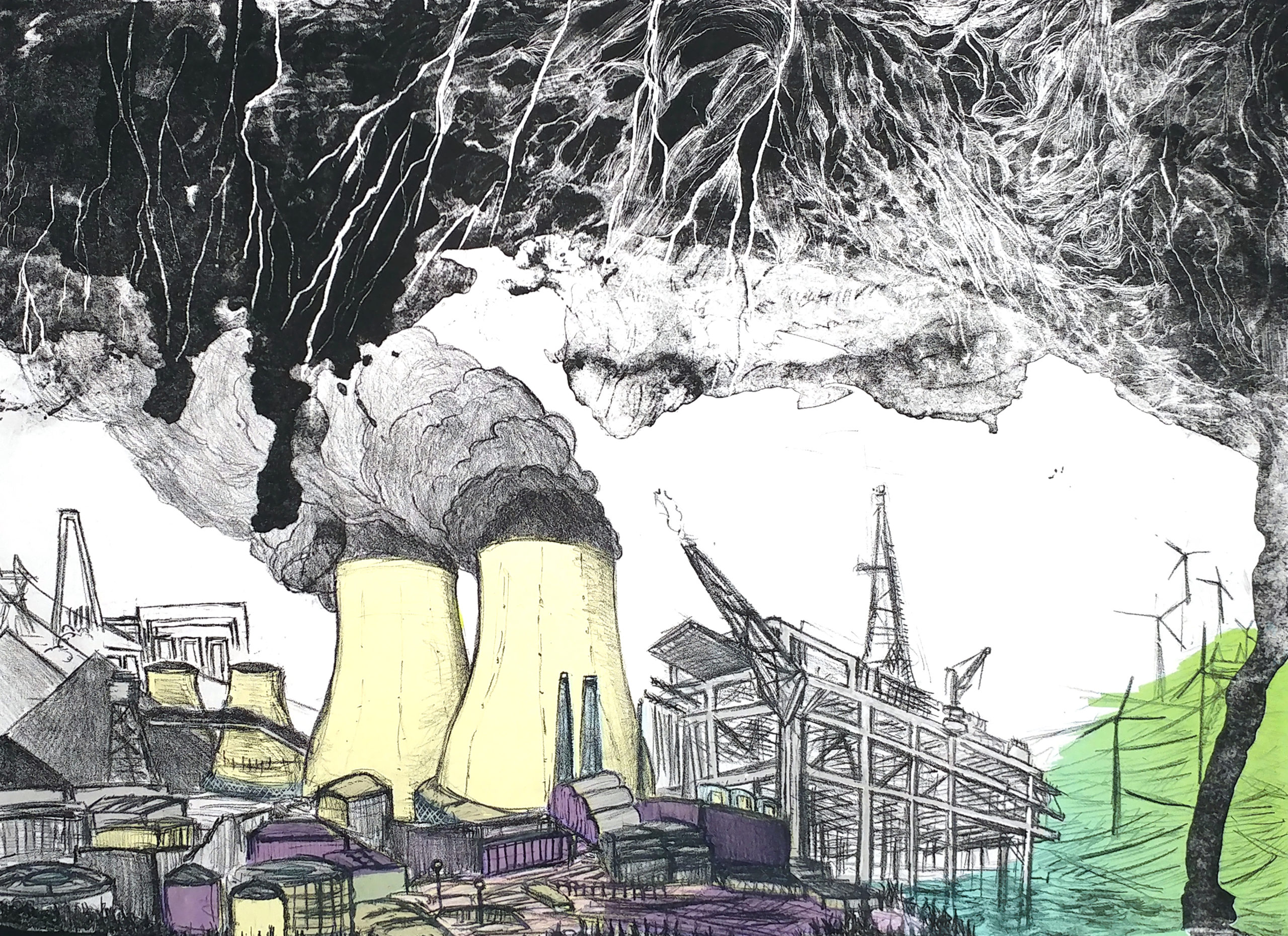
Margaret White
East Carolina University
Master of Fine Arts
Master of Fine Arts
Art, especially comics, editorial cartoons, and science fiction reflects our socio-political structures while imagining new ways to exist; this is my goal in making artwork regarding climate change.
I am intrigued by the tension in scientific and political debates and the collision of contemporary issues and traditional values regarding environmentalism: specifically, protecting humans versus preserving nature and the mitigation and adaptation debate. Scientists diverge on whether mitigation or adaptation is the most appropriate response to climate change. Proponents of mitigation seek to reduce anthropogenic impacts on the Earth’s climate; adaptation, rather, attempts to respond to climate-related damages that do occur. Environmentalism and conservation go hand in hand, but climate change is a world issue that affects us on global and personal levels through economic and social challenges.
Organizing image hierarchy via layering, selective coloring, and the manipulation of visual perspective highlights the different aspects of climate change and the multiple literal perspectives needed to tackle it. In this way, the art acts as a framing device for the scientific and political issues. My work expresses a narrative quality and contains vivid colors inspired by a love of comic books, sci-fi and political cartoons.
There is no returning to the pre-human version of nature. Research shows that has not existed for tens of thousands of years.[1] But we can make progress in how we practice environmentalism, economics and politics, and art. Through art, I am attempting to push our approach to science and nature to be more expansive and socially oriented.
My work is inspired by the IPCC Special Report 2018:
https://report.ipcc.ch/sr15/pdf/sr15_spm_final.pdf
and the Green New Deal:
https://www.congress.gov/116/bills/hres109/BILLS-116hres109ih.pdf
———————————————————————————————
[1] Boivin, Nicole L, et al. Ecological consequences of human niche construction: Examining long-term anthropogenic shaping of global species distributions. Proceedings of the National Academy of the Sciences of the United States of America. 2016. https://www.pnas.org/content/113/23/6388
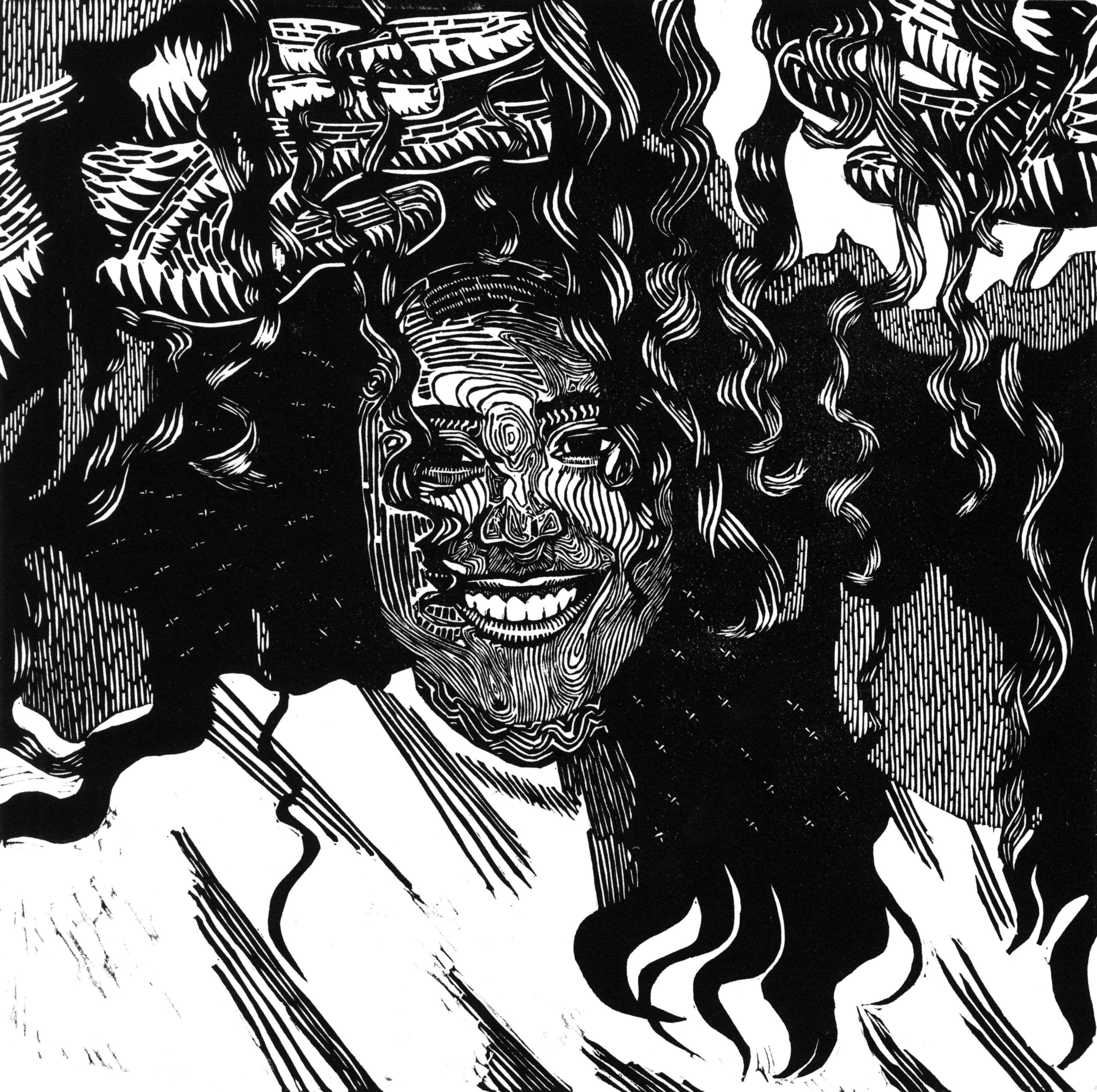
Alefa Afalava
La Sierra University
Bachelor of Arts
Bachelor of Arts
I use printmaking as a translator and bridge between my original island heritage, and my newfound Western independence. It is important to me that I am constantly learning in order to utilize the appropriate techniques to convey ideas concisely.
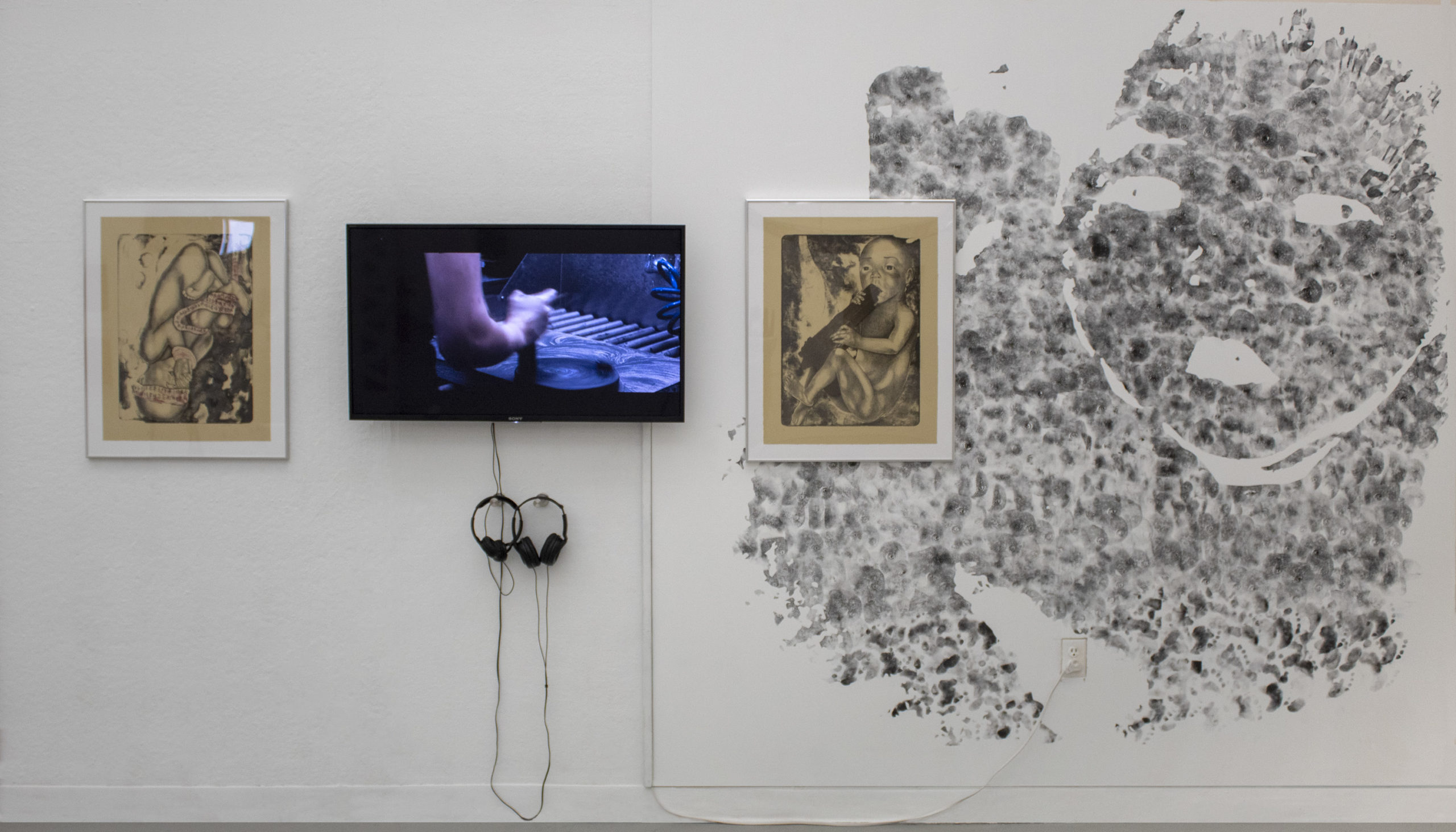
Danqi Cai
Maryland Institute College of Art
Bachelor of Fine Arts
Bachelor of Fine Arts
My work contemplates the ethics and perils of biological reproduction through printmaking, a medium that metaphorically bridges life and death. With “womb” being the Latin origin of “matrix”—a key element of printmaking—print media is akin to reproduction. A generative matrix begets multiplicity, just as we begin by making copies of our cells.
I make prints to cope with difficult emotions that arise from reading news regarding childbearing and child-rearing. These true stories often lay bare contradictory values that we harbor. My lithographic scroll, for instance, comments on the current gender imbalance in China, and explores the irony of people not wanting daughters yet desperately needing wives for their sons.
My prints are not only social commentaries, but also self-portraits. In some of my lithographs, for example, I reference my own body to depict the fertile female who finds herself diminished by her ability to bring forth life. In other lithographs, my one-month-old portrait becomes the face of the fetus, who has the rare opportunity to decide whether she wants to be born or not.
My multimedia triptych, To Be or Not to Be?, not only alludes to printmaking’s connection to birth and life, but also examines its connection to death. This project includes two 26” x 20” lithographs and a sixteen-minute-long video displayed in between the two prints. It delves into an existential question: whether life is a gift or a curse.
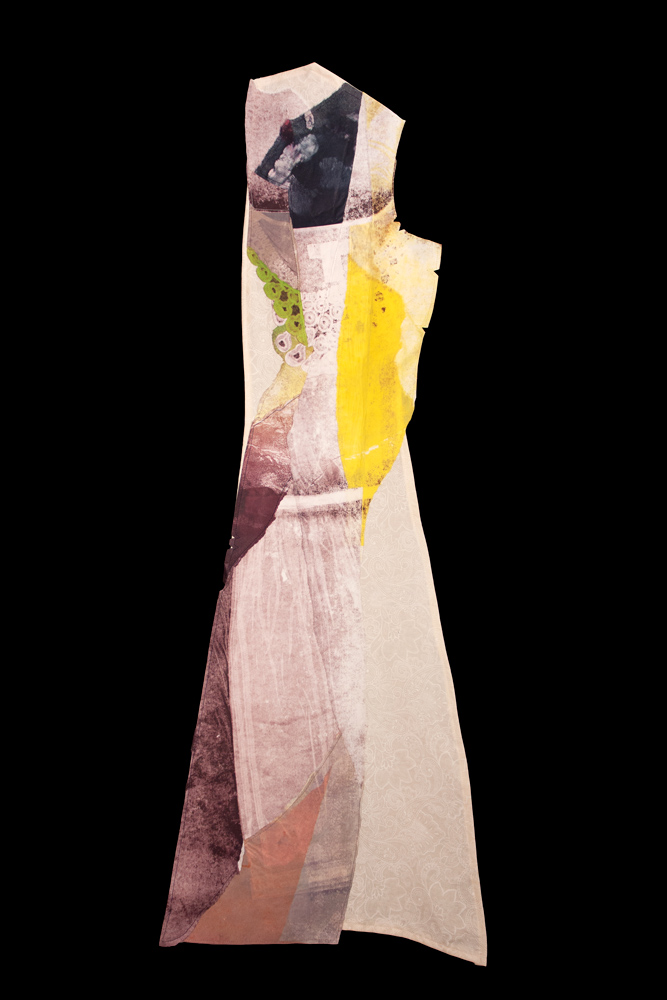
AJ Zandt
Iowa State University
Master of Fine Arts
Master of Fine Arts
My most recent prints expand the relationship between the human body and surface through the lens of skin and clothing. Each work is comprised of varied combinations of pressure-printed fabrics and impressions of human skin on paper that take the shape of sewing patterns. I tear my prints after the first layers are established and follow the tears with shuffling, reassembling, and reprinting before stitching the pieces together. The prints are a reflection on the role of surface as a boundary. They are barriers that capture, like a fine net or filter, the actions of an artist at work. The actions themselves permeate the paper, but the evidence of the experience is registered—or printed—onto the paper’s surface. They are left behind as affirmations of life.
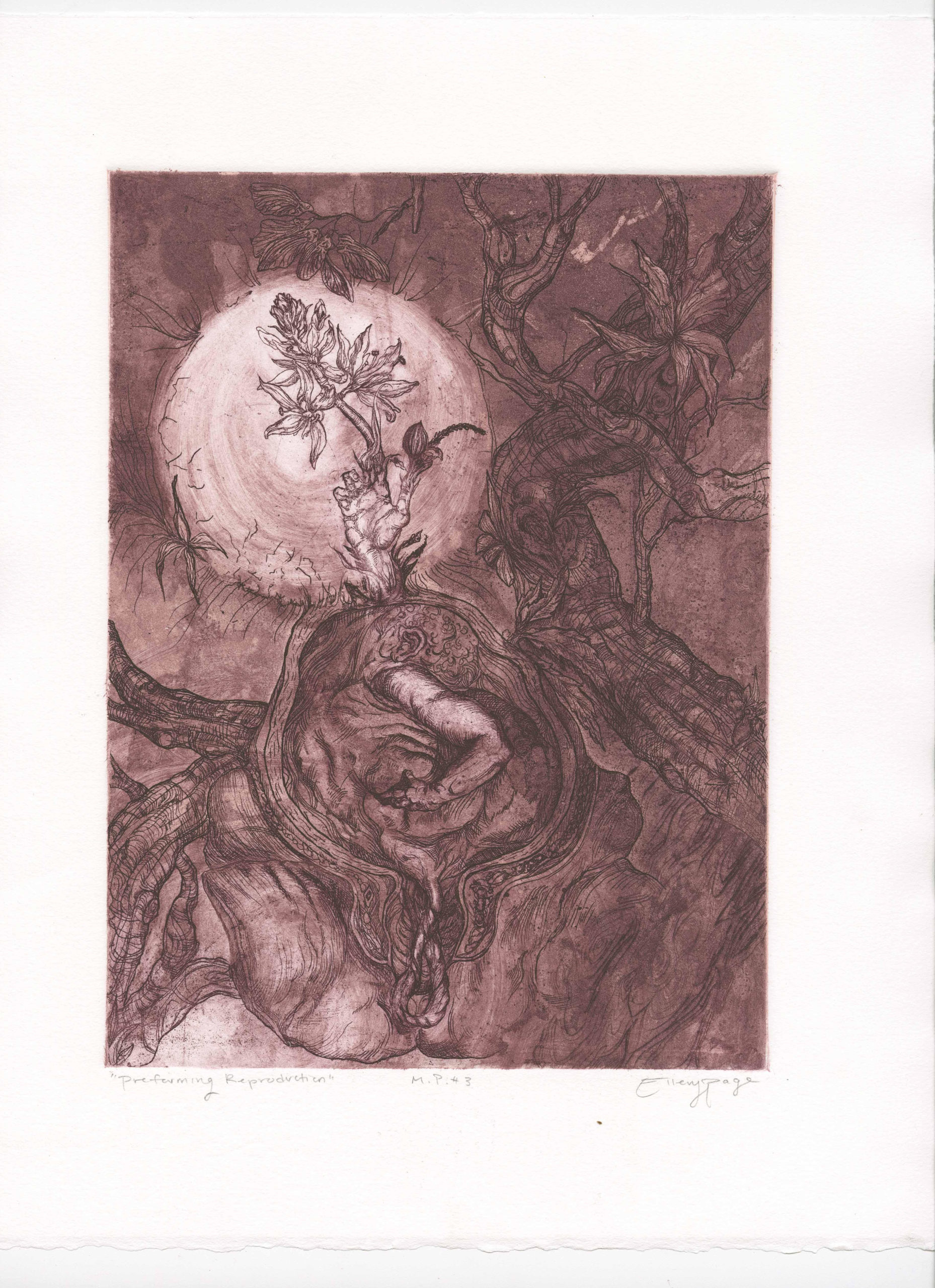
Ellery Page
University of Arizona
Bachelor of Fine Arts
Bachelor of Fine Arts
I use printmaking as a medium to tactically translate my interdisciplinary interests in neuroscience, art, and poetry. At the root of evolution and biology is the power to replicate with slight varieties of differences. Exploring these slight variations in the process of printmaking allows a more authentic means in creating work that is about evolution, home and the psychological importance of touch. A mediator of touch is perception. The surrealistic morphing of anatomy strives to initiate a change in the viewers perspective, how they see and categorize their world, not only to thin the line between humans and our environment but to the lines between reality and our metacognition.
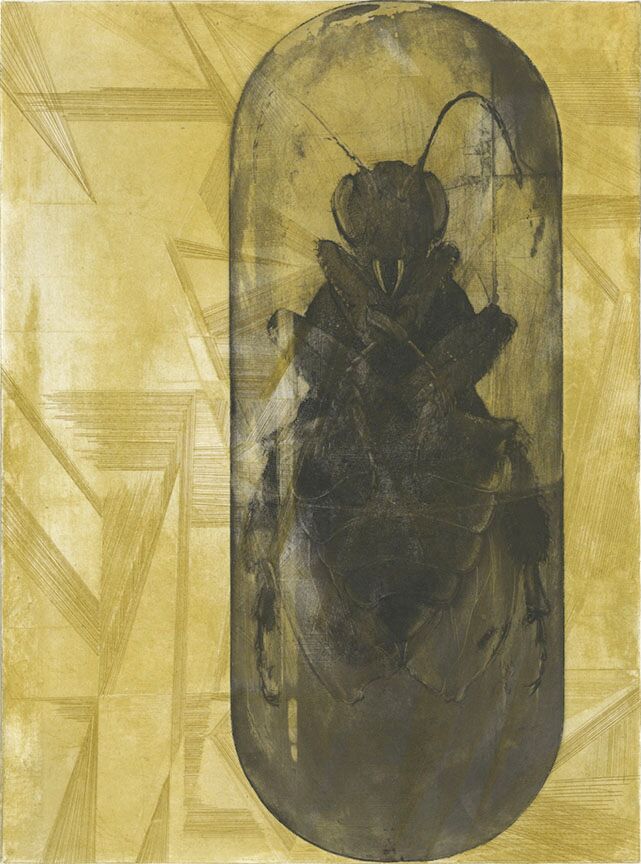
Lucy Green
Lesley University College of Art and Design
Bachelor of Fine Arts
Bachelor of Fine Arts
The series came from a sculpture I created through found object. I always want to be drawing from life and the collection of subjects for reference is necessary for me. Using portions of various paper wasp nests I have placed the animals that created this home back into their respective places. Each bug is inside a gelatin pill capsule and inside the concave storage cells. The process became tedious and obsessive, and it felt like how these hive minded creatures work to build their homes. Placing them back where they came from is a way of containing and preserving a species that is never static.
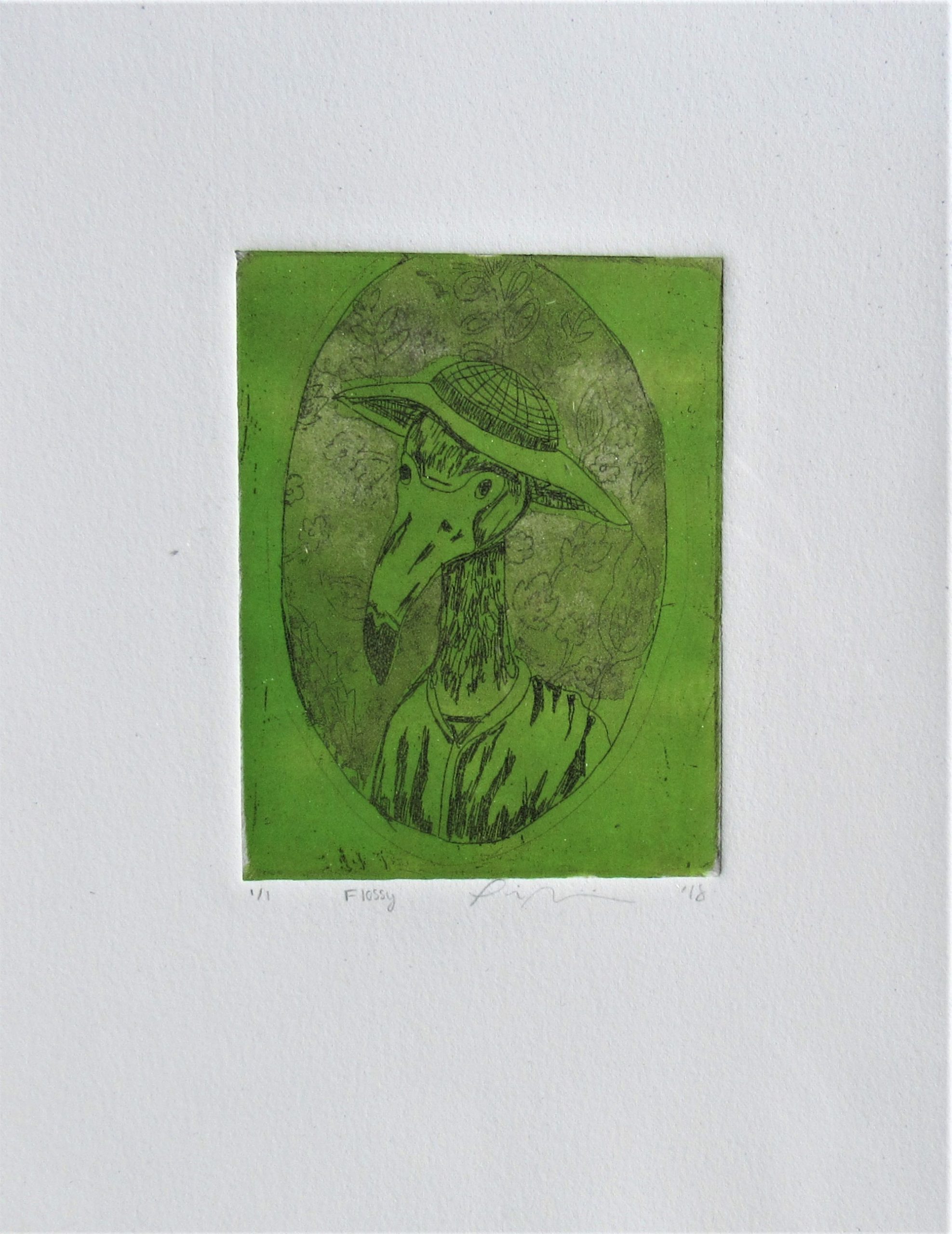
Tia Nichols
University of Virginia
Bachelor of Arts
Bachelor of Arts
What does it mean to be endangered? To be, but only to an extent? To live, but only as though there were no tomorrow? If swiftly googled, endangered species are “anyone or anything whose continued existence is threatened.” What if you were told the Sumatran Rhinoceros, Marine Iguana, Bald Eagles, or the millions of wild animals of the world weren’t the only species hunted for sport or commodity? Among the human race, there are endangered species we often overlook. Society has normalized the dwindling population of chickens, various bird species, pigs, and cows for mass consumer culture. Instead of getting upset over this, choosing a vegan lifestyle would suffice. However, the media desensitization to the dwindling population of black, brown, and yellow bodies for God knows what, will always leave pits of stomachs palpitant.
My imagery intends to create thought provoking content for viewers, as they are forced to combine the worlds of farm animals used for meat and dairy products, exotic bird species hunted for feathers and clothing, and that of minorities who are often profiled and mutilated for senseless results. With an attempt at Artivism, my desire is to raise awareness regarding minority and animal rights through a coexistent, visual narrative.
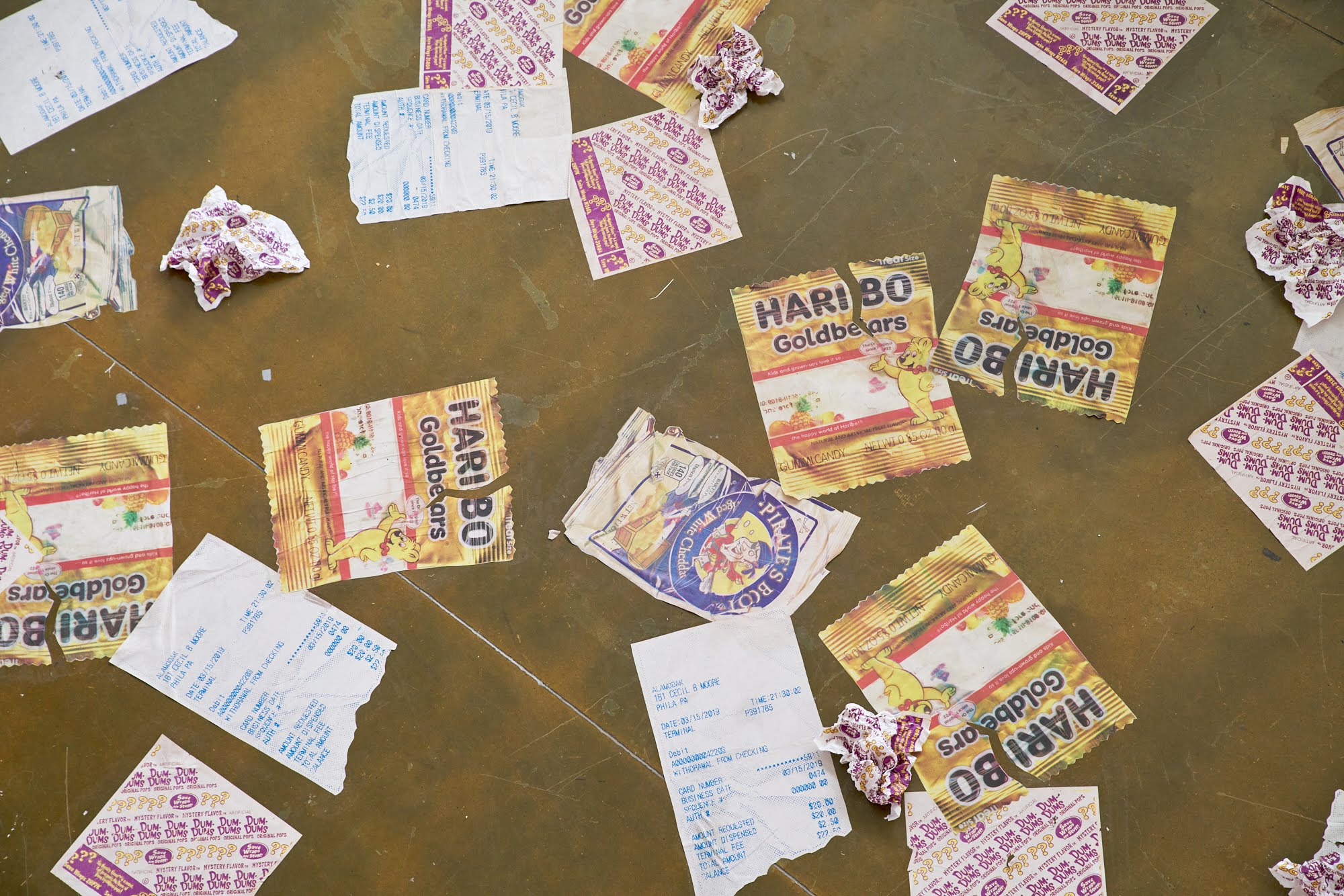
Nikki D’Agostino
Tyler School of Art
Bachelor of Fine Arts
Bachelor of Fine Arts
My work analyzes subconscious human behaviors and their spatial impact. By documenting transient moments of repetitive toxicity in urban landscapes such as fleeting posters, cans, and plastic bags, I highlight the indulgent and wasteful aspects of our lives we fail to observe. From physically enlarged photo realistic litter to constructing interactive installations, I am able to address quiet uncharted moments always around us. My desire for material sustainability is strongly influenced by making recycled handmade paper derived from studio waste scraps. Through sardonic representations of consumerism, my prints and installations capture the recurrent debris we leave and instantaneously disregard.
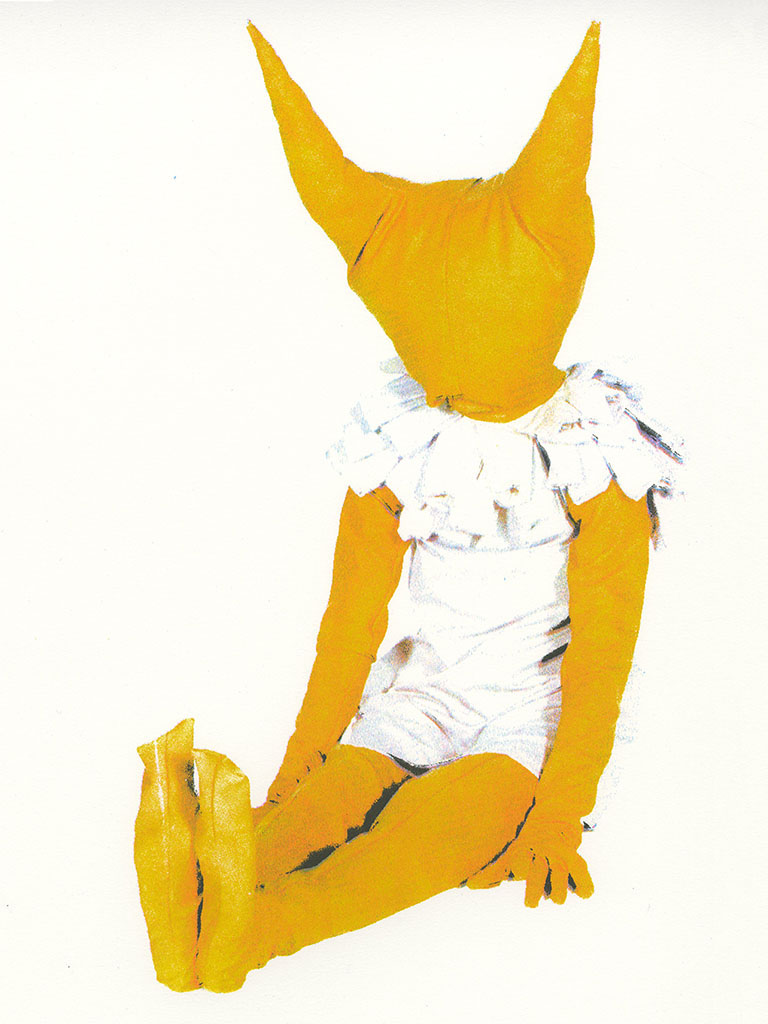
Mahri White
University of Manitoba
Bachelor of Arts
Bachelor of Arts
Mahri White is a Winnipeg based artist with a focus in printmaking and sculpture. These mediums cross very frequently, and images of her three-dimensional works are used to create lithographs, silkscreens, and monoprints.
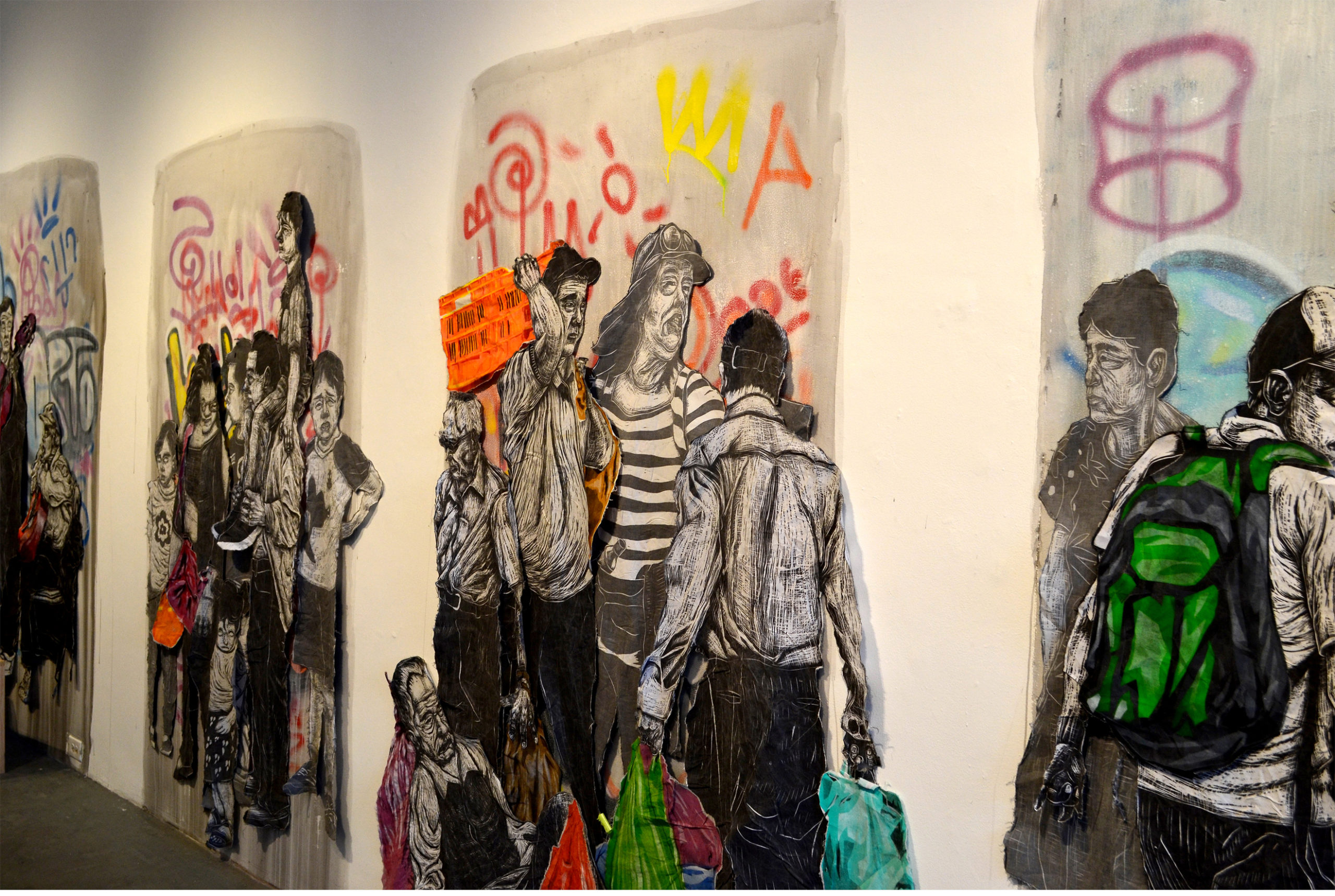
Carlos Llobet
University at Buffalo
Master of Fine Arts
Master of Fine Arts
Carlos Llobet Artist’s Statement
I’m a Costa Rican printmaker, strongly influenced by street art as well as German Expressionism. Currently, I’m exploring the idea of going beyond the printed editions but still maintaining the intrinsic characteristic of multiplicity in print media to create compositions and unique works of art using collage, painting and weaving the prints; this came about from his need to express new ideas that couldn’t be done in traditional print media.
A significant theme is the portrayal of life in the streets of his home, San José. The prints are a snapshot of the people who earn a living by doing informal jobs, lottery salespeople, shoe shiners, street musicians and car watchmen among many others. By using this subject matter, I intend to bring to the forefront the plight of those who are struggling economically in an ever-increasing world where the gap between the upper class and the lower is widening.
For the last year and a half, I have been exploring this widening gap between the rich and the poor and how the history of Latin America has perpetuated this economic inequality; as well furthering the exploration on the limits he can take printmaking, not just in size but also in its application for installations and public art.
The intention to shine a light on the shrinking middle class of Costa Rica, a segment of the population who is burdened with supporting through taxation corrupt politicians and corporation, but at the same time bombarded nonstop through the media with mages of a lifestyle that is increasingly harder to achieve.
My recent work consists of large format relief prints of people, he has encountered back in his home country of Costa Rica. The human figures are carved in a realistic manner and printed by hand on fabric. The characters are printed individually, which creates the opportunity for an infinite number of different compositions in which they can be arranged and create different narratives depending on the combination of figures.
This new work will be a five to seven-year project where I will continuously add more figures to create a more complex relationship between the prints, space and the audience. I intend to display the figures in outside areas through public interventions.
